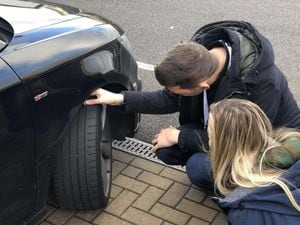Tyre safety month: Here’s what to check to keep your tyres in order
As the main contact patch between car and road, a tyre is crucial when it comes to safety. Here’s what to look at.

October marks tyre safety month, highlighting an often overlooked aspect of car maintenance. As the main point of contact between the car and the road, tyres are absolutely crucial when it comes to a vehicle’s overall safety.
Despite this, many people fail to routinely check their corners. According to a recent survey of 2,000 drivers by Halfords, some four million cars could be on the roads illegally with bald tyres, after 13 per cent of 2,000 motorists admitted to driving with tyres which were below the legal tread depth.
The good news is that checking your tyres needn’t be complicated. Here’s what to look at to ensure that you’re safe on the road.
Tread depth

>
The legal minimum tread depth here in the UK is 1.6 millimetres. Leave your tyres to go below this and not only are you risking your safety, but there’s a chance that if found then you could face a fine – up to £2,500 per tyre – and penalty points on your licence.
With more water on the roads at this time of year, the risk of aquaplaning is higher too. However, to check them, you can use a 20p piece.
Insert it into the groove of the tyre and, if the outer band of the coin is obscured, then the tyres are legal. If you can see the groove, however, then it’s time for new tyres.
General condition

>
Being completely black and sitting underneath dark wheelarches, it can often be tricky to spot any issues on the walls of the tyre. It’s easy to check, however. Run your hands over the wall of the tyre and feel for any strange lumps or bumps. Do a visual check too and keep an eye out for any cuts or bulges.
If your tyres have been fitted for some time, there’s a chance that they could be dry and cracked too. If this is the case, then it’s probably a good idea to swap them out for some fresh rubber.
If you find any issues, it’s always worth changing the tyres.
Pressures

>
Tyres which aren’t properly inflated can not only affect your car’s performance but also contribute to higher fuel use which, in turn, means larger fuel bills.
Checking the pressures is simple too. The correct pressure for your vehicle can be found either in the car’s handbook or underneath the fuel filler cap. Find it, and ensure that all four tyres match this pressure. You can do this via a home compressor, or by an air supply found at most petrol stations.





